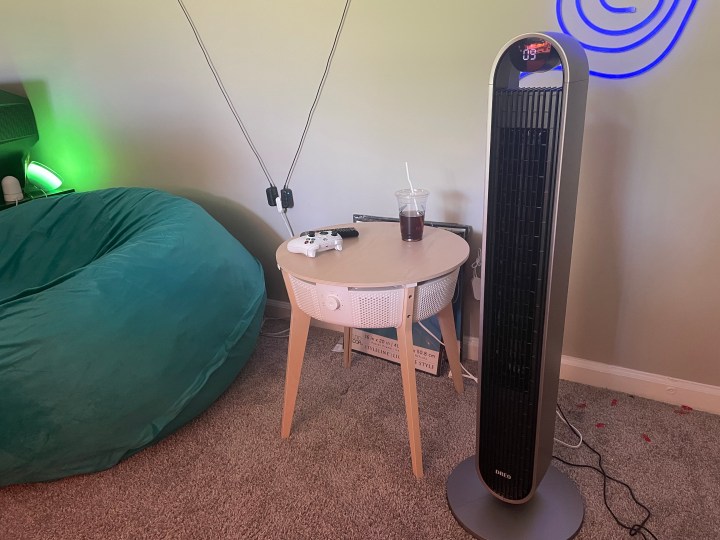I tried out the Dreo Smart Fan earlier this year. Among its many features is one called “sleep mode,” which purportedly lowers the volume of the fan without impacting performance. I didn’t think much of it; after all, how loud could a fan actually be? And then fall arrived.
For those of you who aren’t familiar with weather in the Southern U.S., you can experience three seasons in a single day. It might start out as sweater weather in the morning, then be warm enough to swim in the afternoon — only to plummet overnight. It’s impossible for a thermostat to keep up.

On one night when it got a bit warmer than it should have been, I took that smart fan into the bedroom to try and cool things down. As it turns out, the fan was louder than I thought. So with nothing to lose, I opened the app and turned on sleep mode.
And then I had to make sure the fan was still working. I felt the airflow, but I couldn’t hear it unless I listened closely.
A pleasant surprise
I can’t sleep with a lot of noise in the background. White noise is fine, but a lot of smart fans need to be cranked up to higher speeds to produce noticeable airflow. Of course, higher settings also means more volume.
Out of the Dreo Smart Fan’s 12 speeds, I usually keep it on a nine or so. It’s reasonably quiet during the day, when there are other sounds in the house to drown it out. At night, when I’m lying in bed? It’s the only thing I can hear. When I activated Sleep Mode, there was a small pause, and then the fan began to quiet down without losing as much airflow.
It somehow found an equilibrium between air output and noise level. It also shut off all onboard LEDs. Again, they are useful for checking the status of the fan at a glance, but can seem as bright as the sun in a dark room.
According to documentation, Sleep Mode gradually decreases the output before shutting the fan down according to its timer. This also means the fan can be programmed to turn on at a specific time; in fact, mine remains on Sleep Mode at nearly all times, but still produces airflow with lower noise levels.
The benefits of smart fans
I’m always in search of ways to sleep better. I’m a bit of a workaholic, and I like to capitalize on time spent asleep. So many people are chronically sleep-deprived that it’s important to make those hours of snoozing count, and uncomfortable sleep does not a restful night make.
Smart fans can give you that little bit of extra cooling, but with more precise control. You can set it to turn on and off at certain times, which means no more crawling out of bed when you’ve found the perfect spot to switch on the fan. You can even control it with your voice if you don’t want to stare at your phone.

Some smart fans go beyond just cooling, too. Take the LG PuriCare AeroTower. While it provides extensive cooling capabilities, it also doubles as an air purifier. It keeps you comfortable and helps you breathe easier — literally.
In the grand scheme of the smart home, fans are a secondary investment. Most of them are still unifunctional, which is something we’ve talked extensively about in the past. Smart home devices need to serve more than one function, or they’ll go the way of single-use kitchen gadgets.
Then you have products like the AeroTower. While it’s a phenomenal device, it’s price is on the steep side for an air purifier and a fan. Right now, smart fans need to both come down a bit in price and expand their functionality before I can readily recommend them to the majority of people, but possessing truly useful features is a step in the right direction.



